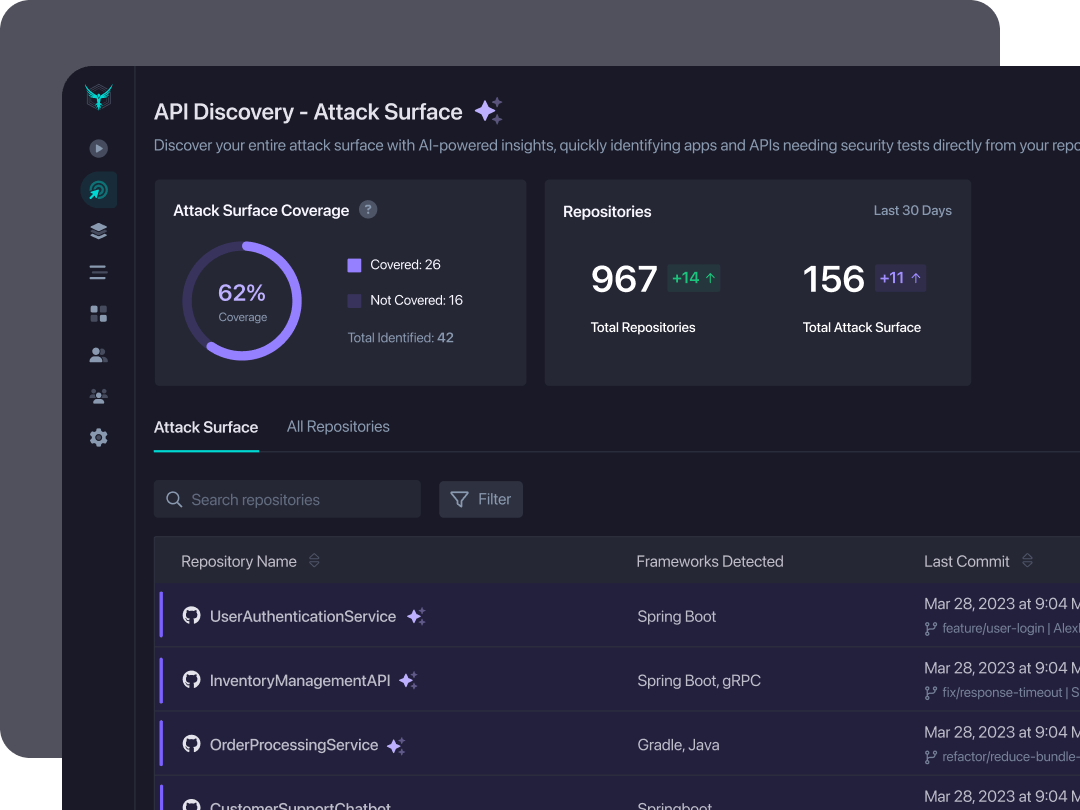The CI/CD-Native Alternative to Burp Suite
Why Choose StackHawk Over Burp Suite DAST?
StackHawk is the only true shift-left DAST platform that’s purpose-built to bridge the gap between security and development teams to enable secure software delivery at the speed of AI development. Unlike Burp Suite DAST, which evolved from a manual penetration testing toolkit with infrastructure requiring VMs, servers, and agents, StackHawk delivers security testing results in minutes through a lightweight Docker deployment. Our approach enables devs to find and fix vulnerabilities during development without specialized security expertise or complex infrastructure setup.
Trusted by the Following Flocks

Implementation Flexibility
StackHawk deploys via a single Docker container that runs anywhere: developer machines, CI/CD pipelines, or any computing environment. From signup to first scan takes 20 minutes with simple YAML configuration. No VMs, servers, agents, or firewall changes needed.
Burp Suite DAST requires provisioning separate VMs for web server, enterprise server, database, and scanning agents before testing begins. Setup requires security expertise and creates ongoing maintenance overhead. The architecture remains built for centralized security team operation rather than distributed developer workflows.
Native CI/CD Integration
StackHawk runs directly in CI/CD pipelines alongside your application, testing only the microservices and APIs affected by each code commit. Results appear immediately in PR comments, build logs, or the terminal. Scans execute in minutes with configurable build breaking, enabling developers to catch vulnerabilities before merging code.
Burp Suite DAST triggers scans externally via API calls to test staging environments, but scanning happens in Burp’s infrastructure rather than your pipeline. Every code change triggers a scan of the entire application, creating longer scan times and unclear ownership of findings. Results require logging into Burp’s UI rather than appearing natively in developer workflows.
Source Code API Discovery
StackHawk automatically discovers your complete attack surface from source code before deployment, mapping every REST, GraphQL, gRPC, and SOAP API the moment they’re committed—including shadow APIs and internal microservices. We auto-generate API specifications from code, enabling comprehensive testing coverage of your actual attack surface without maintaining documentation.
Burp Suite DAST discovers APIs during runtime through crawling or requires manual upload of OpenAPI specifications, Postman Collections, or WSDL files. APIs must be deployed and publicly accessible before testing occurs. Coverage depends on crawlers finding endpoints or teams maintaining accurate documentation. Undocumented shadow APIs and internal services remain invisible unless manually configured.

Kaakaws From Our Customers
Burp Suite vs StackHawk Feature Comparison Guide
Actionable vulnerability feedback integrated into every pull request with clear remediation steps that fit developer workflows
Security-focused reporting primarily delivered through HTML/PDF reports and XML exports; limited direct integration into developer workflows and pull requests
Source code-driven discovery finds internal and public-facing APIs before deployment, preventing exposure
Definition-driven only; no shadow API detection, source code analysis or gateway integration
Comprehensive testing for all API types: REST, SOAP, GraphQL, and gRPC
Scans REST APIs and GraphQL support requires introspection to be enabled
Native pipeline integration across all major platforms with scans that complete within standard build times
Supports CI/CD integration but scans typically require longer execution times that may not align with standard build pipelines
Deterministic tests support detection of complex business logic flaws with full transparency and customization
Relies heavily on third-party extensions (Autorize, AuthMatrix, Auth Analyzer) for comprehensive authorization and business logic testing; limited native business logic vulnerability detection
Frequently Asked Questions About StackHawk and Burp Suite
Isn't Burp Suite the "gold standard" for application security testing?
Burp Suite Professional is absolutely the gold standard for manual penetration testing and security research. However, Burp Suite DAST (their enterprise automated offering) represents a different use case: it operates as an isolated security testing solution that requires dedicated security engineers to configure and manage each application individually. This architecture works well for thorough, periodic assessments, but becomes a bottleneck when you need to test dozens or hundreds of APIs at the pace of modern development. StackHawk was purpose-built from day one for automated CI/CD testing, which is why teams shipping code daily typically find our approach more practical than trying to automate a tool designed for manual analysis.
What about Burp's research-driven innovation and low false positive rates?
Burp Suite’s PortSwigger Research team does pioneering work discovering new vulnerability classes—that’s genuinely impressive and valuable to the security community. However, the question isn’t whether Burp finds accurate vulnerabilities; it’s whether their security-team-centric workflow fits teams that need developers to own security testing at development velocity. StackHawk delivers high-confidence findings through runtime exploit verification, and our approach of testing in CI/CD means developers can quickly triage any findings themselves while code context is fresh.
Can StackHawk handle the complex authentication flows that Burp excels at?
Yes. StackHawk handles OAuth, JWT, SAML, and multi-factor authentication through YAML configuration with auto-renewal and session management built-in. For complex multi-step authentication, we support custom scripts and advanced configuration. The key difference: Burp requires security expertise to configure authentication through its UI and proxy manipulation, which can be brittle, while StackHawk enables developers to configure reliable auth-as-code using familiar YAML syntax. Both can handle complex scenarios; StackHawk makes it accessible to developers without specialized security training. And it scales!
How does pricing compare between StackHawk and Burp Suite?
StackHawk uses transparent per-developer pricing with unlimited applications and scanning—predictable costs that scale with team growth, not application count. Burp Suite offers Professional at $475/year per user, while Burp Suite DAST uses pay-as-you-scan models or custom enterprise licensing, averaging thousands of dollars annually. For organizations with many microservices or frequent scanning needs, StackHawk’s unlimited model typically provides better value than usage-based pricing.
